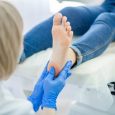As many as two billion individuals worldwide lack at least one crucial micronutrient. As a result, many of them experience severe and chronic health problems.
The United States, in turn, is home to many of those people, even though it’s one of the world’s wealthiest nations.
So if you always feel tired, dizzy, confused, or out of breath, you may be deficient in a vitamin yourself.

Fortunately, there are several ways to test for vitamin deficiencies. We’ve rounded them up in this guide, so read on to discover your options.
Finger-Prick Blood Test
A finger-prick blood test lets you collect a sample of your blood using a tiny device. Inside it is a needle that draws a small amount of blood.
Some finger-prick tests screen for specific vitamins, while others can detect multiple deficiencies. You can check out the guide at Evolvedminerals.com to learn more about the vitamins you need.
Finger-prick blood tests are available in clinics, but you can also get them online. If you go for an at-home test for vitamin deficiencies, you only have to send the sample to a laboratory for testing. The lab, run by independent, board-certified physicians, reviews your test results.
After that, one of the laboratory’s experts creates a detailed report of the findings. Don’t worry, as the explanation uses layman’s terms that you can easily understand. Moreover, the lab will likely provide you with a way to access your results online.
Venous Blood Test
Are you part of the 20% to 30% of the adult population with some fear of needles? Or perhaps you’re wary or uncomfortable performing a self-prick test.
Don’t worry, as you can get a trained nurse to do everything on your behalf at a clinic. However, you’d undergo a venous blood test instead of a simple prick test.
Also known as venipuncture, a venous blood test involves collecting blood from a vein. In most cases, the vein where the sample comes from is inside an elbow.
A healthcare professional first places a tourniquet around the arm of the donor site. Next, the inside of the elbow undergoes disinfection with an alcohol-soaked cotton swab. The needle then goes into your vein, allowing the syringe to collect blood.
Once withdrawn, the nurse blots the injection site with a fresh piece of cotton. Your sample then goes to the lab for screening and review. You can get a physical copy of the results from the clinic, or you can have them send it to you electronically.
Saliva Test
If you want to avoid a needle-based test at all costs, you can get a saliva test instead. This screening method for vitamin deficiencies uses a cotton swab. You insert it inside your mouth and collect a saliva sample inside your cheek.
After that, you have to place the swab inside an envelope and send it off to a laboratory. The results are usually available online or sent to your email after a few weeks.
That’s How to Test for Vitamin Deficiencies
Remember: there are 13 essential vitamins that your body needs to perform as it should. If you lack even one, you’re at higher risk of developing infections and diseases.
So, if you haven’t been eating healthily, it’s best to test for vitamin deficiencies. The sooner you do, the earlier you can correct your dietary habits to improve your health.
Did you like this article? Then please feel free to read more of our informative blog posts now!




